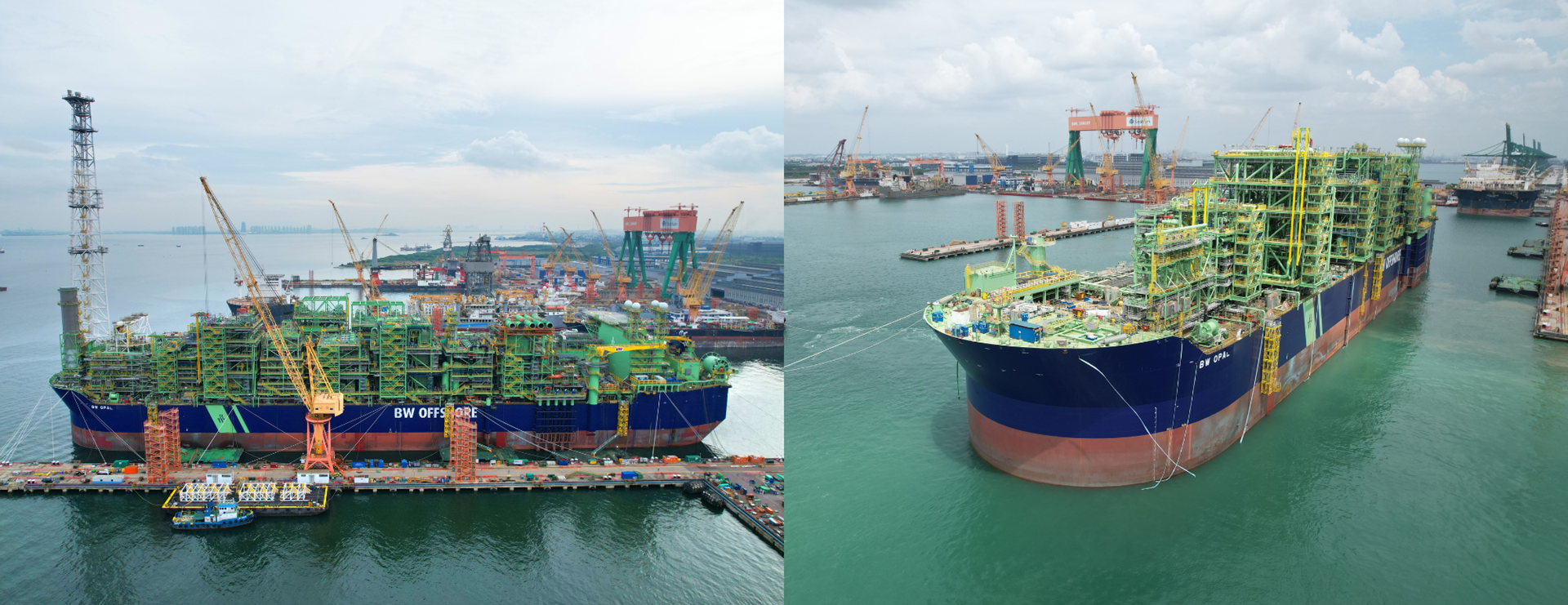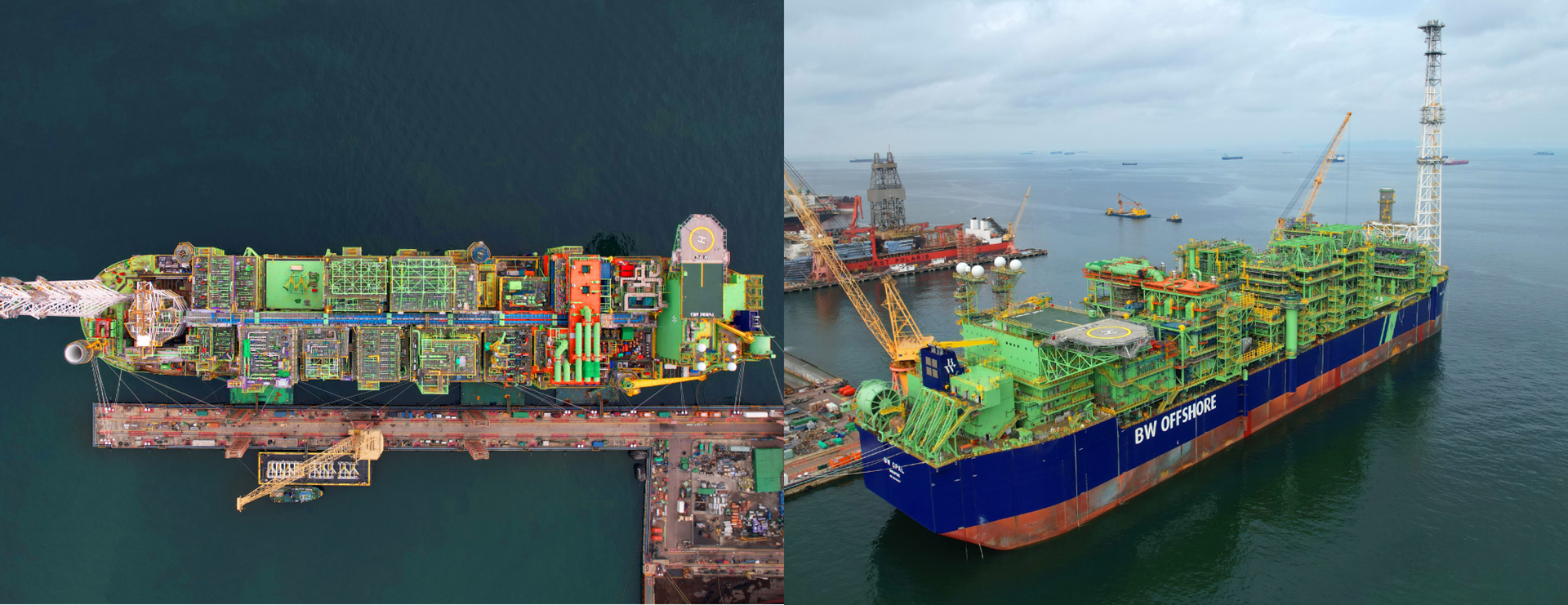A World Class Gas FPSO
Delivering one of the industry’s largest state-of-the-art gas FPSOs, with environmentally considerate design efforts and energy efficient technologies.
In 2021, BW Offshore signed a contract with Santos Ltd. for the supply of a FPSO for the Barossa gas field, with initial production expected to commence during 2025. The Lease and Operate contract has a firm period contract value of USD 4.6 billion with a duration of 15 years, and 10 years of options. BW Offshore is responsible for engineering, procurement, construction, installation, and operation of this industry unique FPSO.
The Barossa gas field is located 300 kilometres offshore Darwin in northern Australia. The field will be developed via the FPSO BW Opal with six subsea production wells, in-field facilities and a gas export pipeline tied into the Bayu-Undan to Darwin pipeline system that supplies gas to Darwin LNG. The Darwin LNG plant is located 6 kilometres from Darwin at Wickham Point and commenced production in 2006.
The BW Opal hull is one of the largest FPSO hulls ever built, with an overall length of 358 metres, a width of 64 metres. The FPSO has a gas handling capacity of 850 million standard cubic feet per day (MMSCFD), and design capacity of 11,000 barrels per day of stabilised condensate. The asset will be turret moored with a newbuilt hull based on BW Offshore’s RapidFramework® design. This robust design can accommodate the most advanced topsides, which in BW Opal’s case will be approximately 35,000 tonnes.

Uniquely designed
BW Offshore has made sustainably conscious design efforts and carefully selected energy efficient technologies for the FPSO. These environmental considerations have led to the achievement of a 15 per cent reduction in greenhouse gas emissions generated by the heating and power system, due to the application of the latest power generation technologies of combined cycle gas turbines (CCGT) with waste heat recovery.
The design selection enables a reduction in greenhouse gas emissions of 2.3 million tonnes over the planned operating life of the asset, which is designed with a closed flame flare system and a hydrocarbon cargo tank blanket system with vapour recovery. This design is expected to minimise the greenhouse gas emissions from open flame flaring and cargo tank operations over the operating life of the asset.
An energy efficiency study conducted on the project in 2021 estimated that during normal operations, BW Opal will consume up to 66 per cent less energy than industry standard design. This maximises the economic recovery from the field and significantly reduces the environmental impact.
Final phase
Following hull construction in South Korea, the BW Opal arrived at the yard in Singapore in November 2023. A major milestone for the construction phase was marked in May 2024, with the completion of the final module lift. The project is now in the integration and commissioning phase. This presents an an exciting period, involving integration works, mechanical completions, line walks for commissioning, the start of dynamic commissioning, and the commencement of nitrogen-helium leak tests.
Through this final stage it will be ensured that all systems and components of the facility are installed and tested to meet our rigorous standards. This critical process ensures that BW Opal will operate safely, efficiently and reliably.
